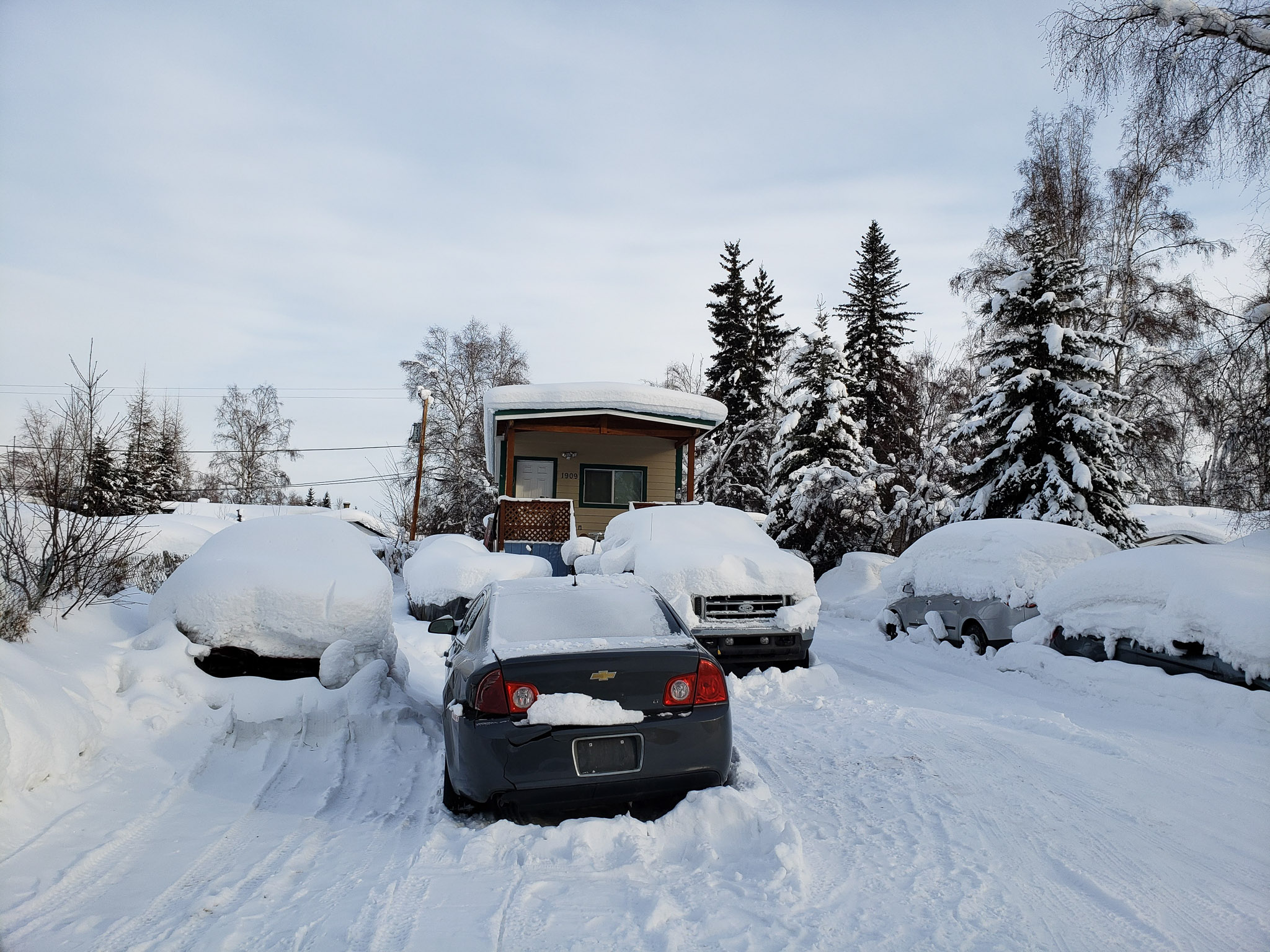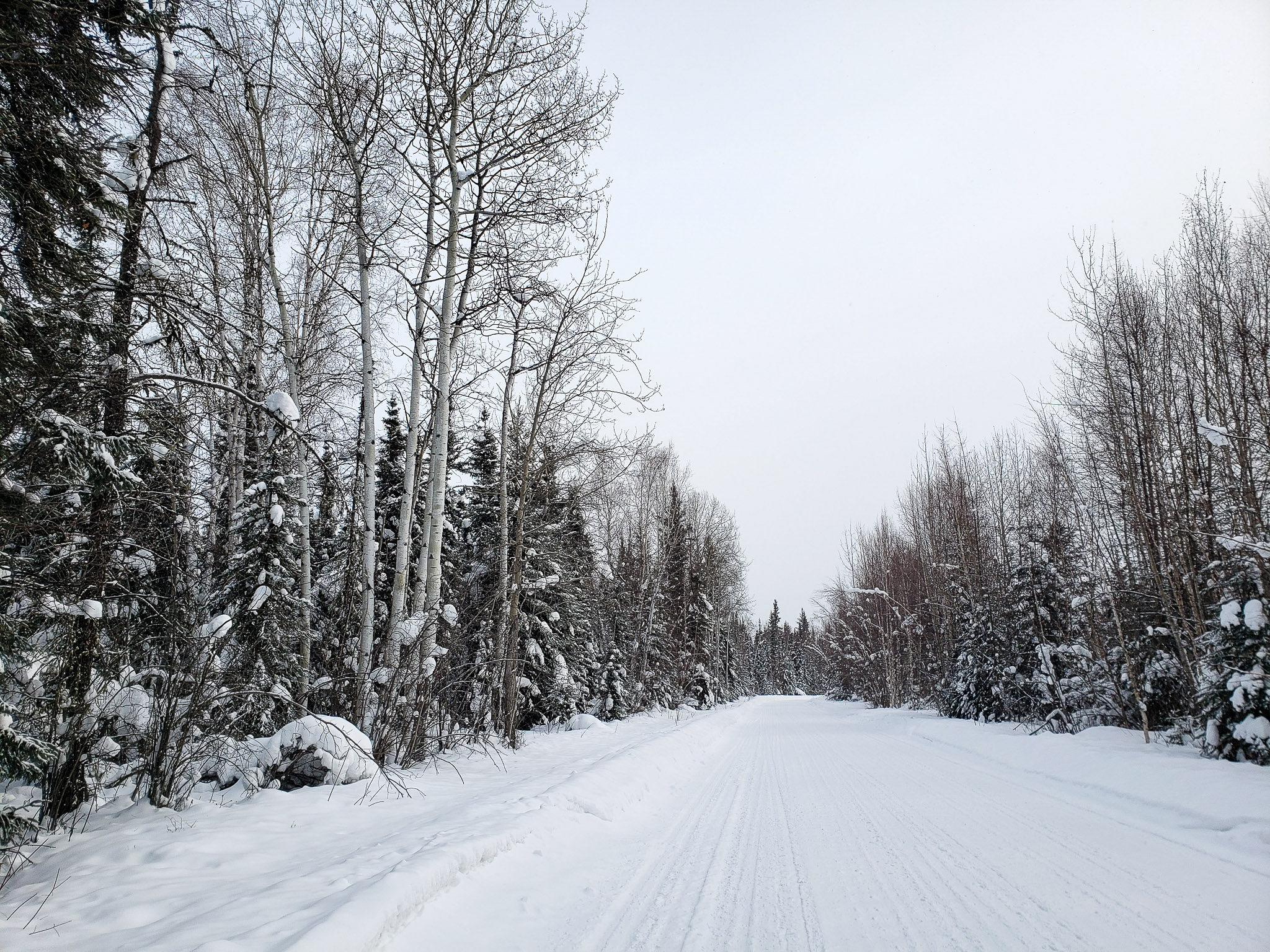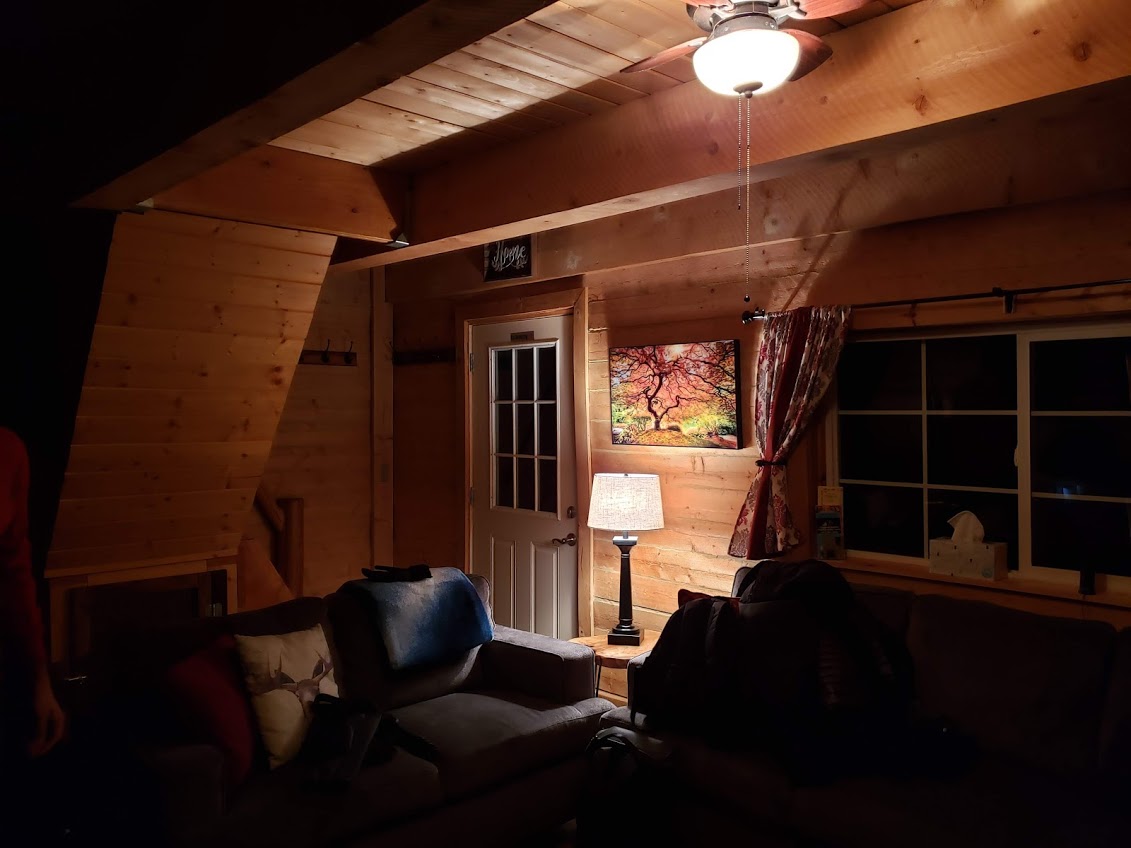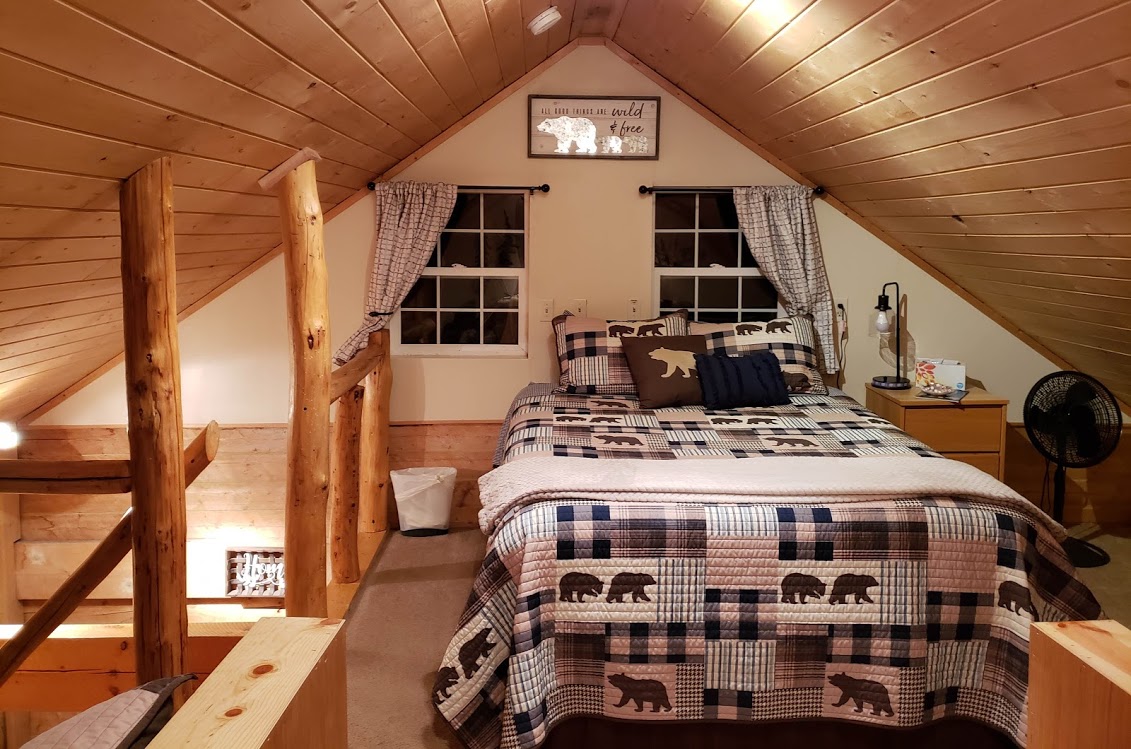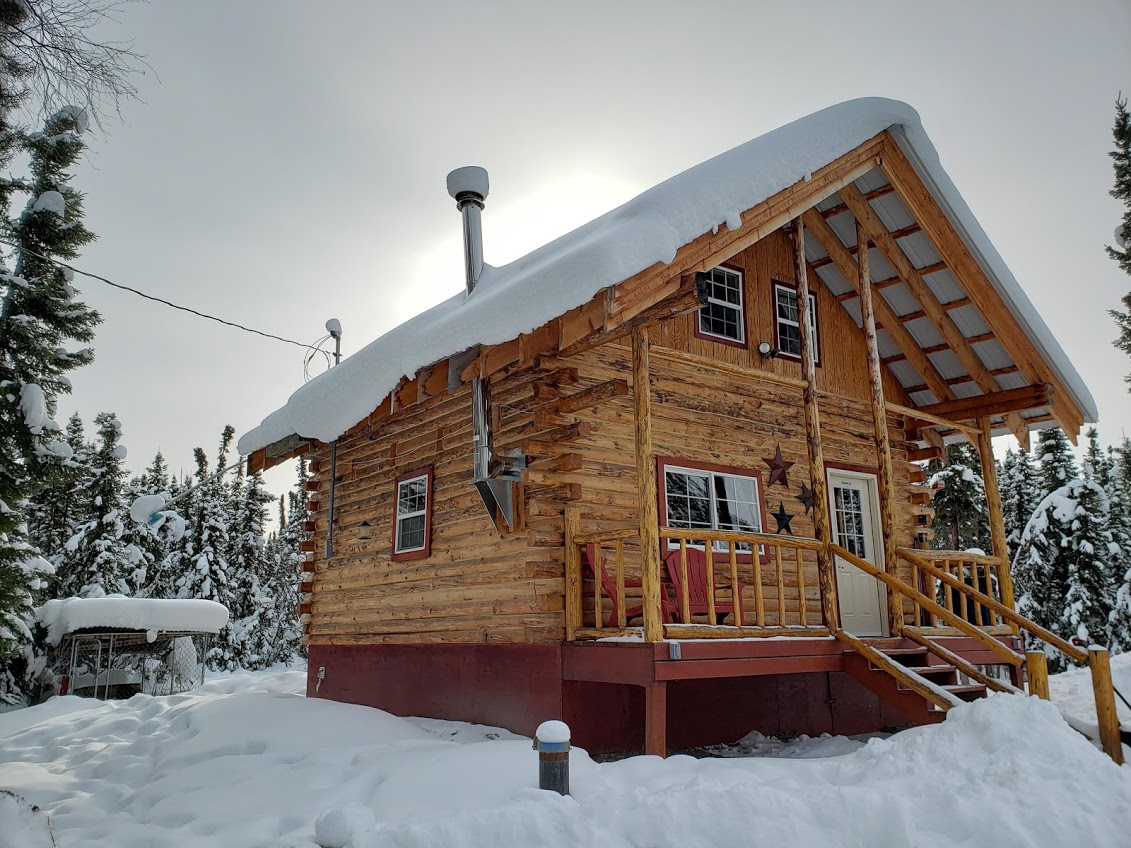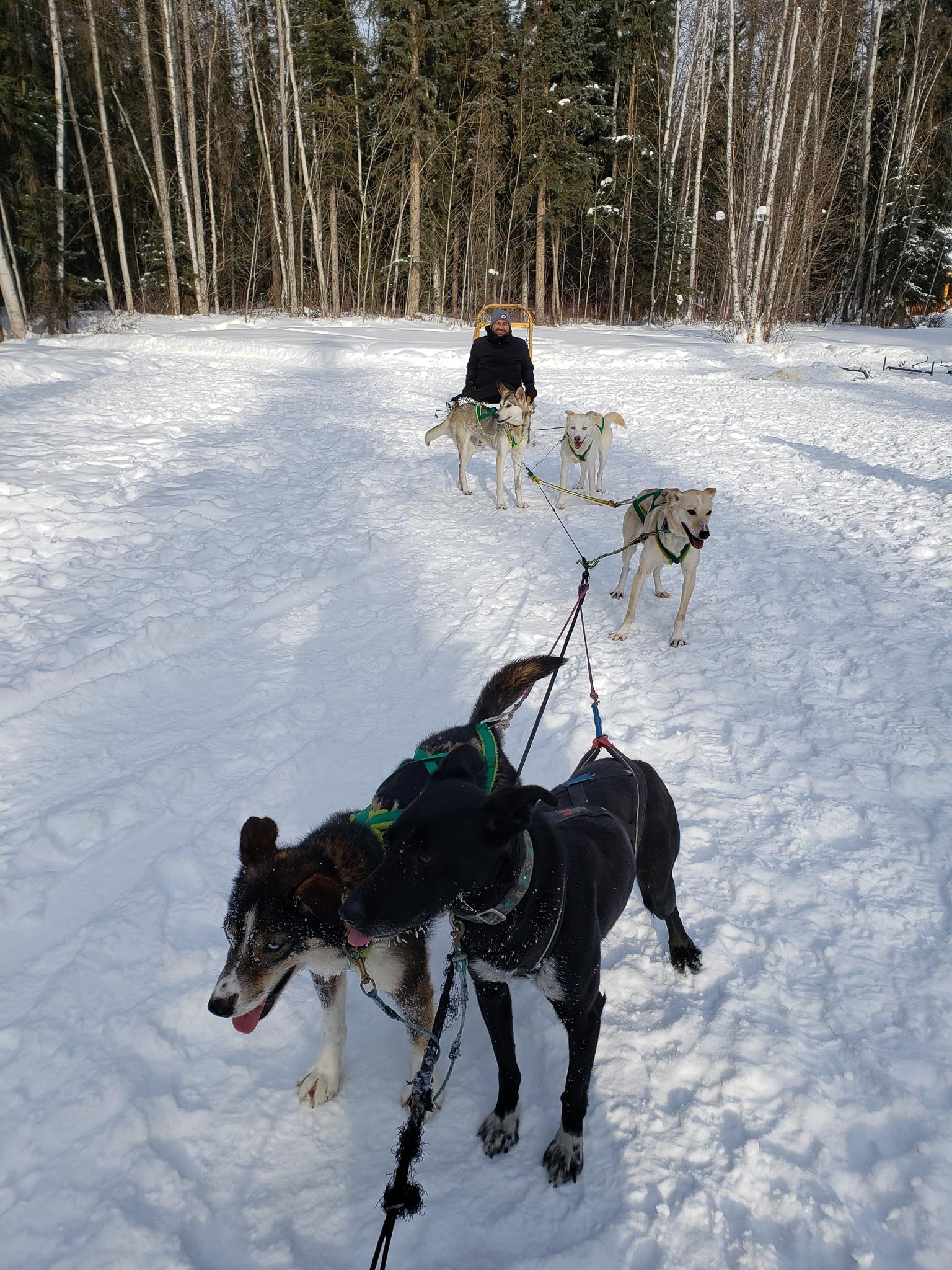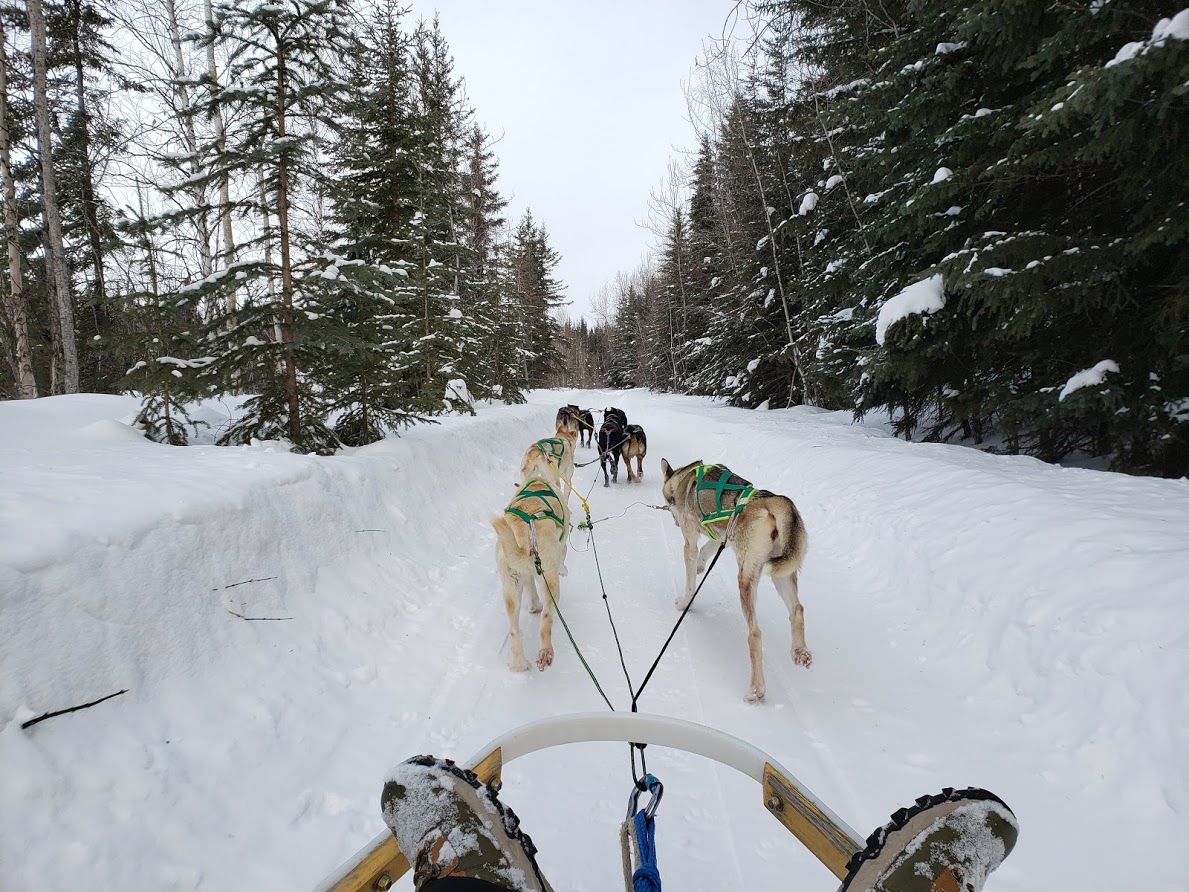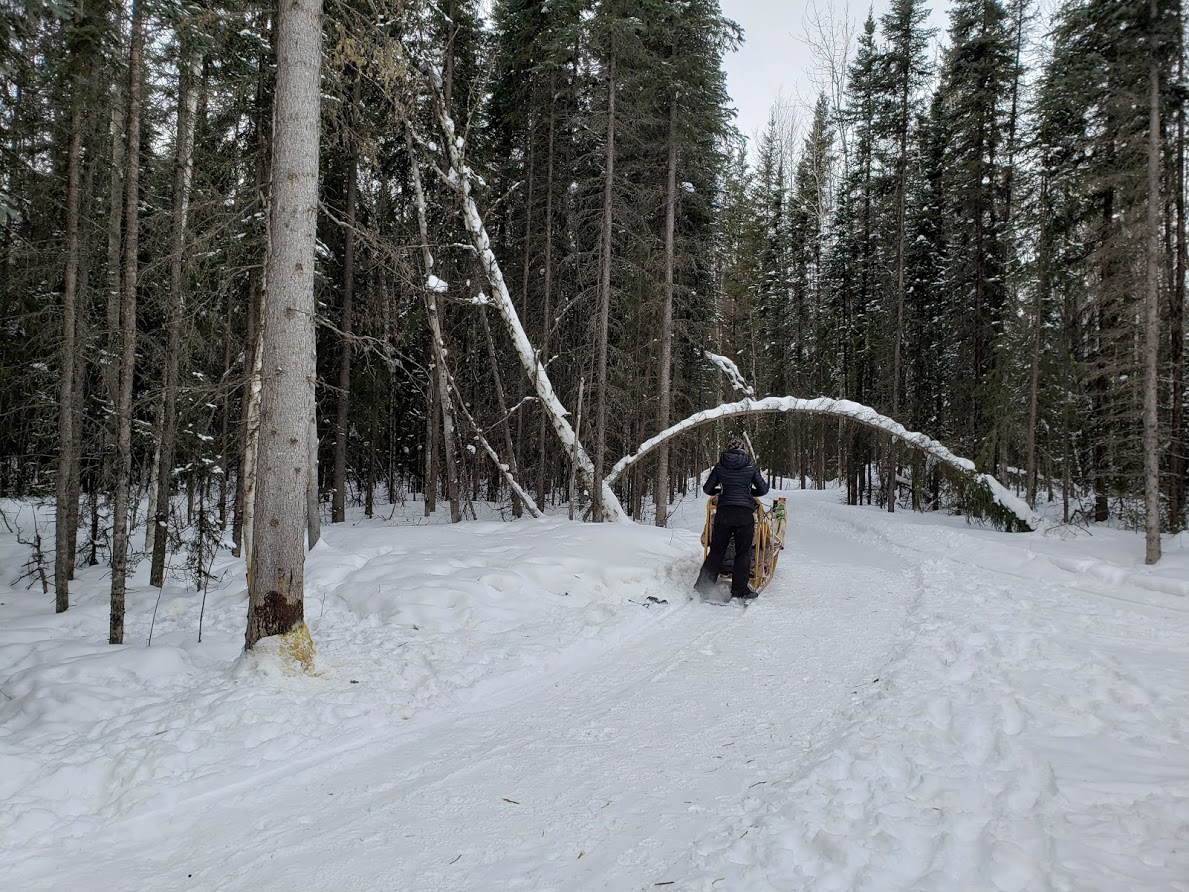Beyond the wall to Alaska
It was early March 2020. News of COVID-19 started to appear but the scale, the impact, and recommended precautions were all unclear. From that ignorance arose the courage that pushed two of my friends and me to go ahead with our much-awaited trip to Alaska. Alaska, the northernmost state of the USA is separated from mainland USA by Canada. It is called the last frontier for its rugged landscape, climate and for being largely unexplored and uninhabited even today. Interesting tidbit, Alaska was bought from Russia by the United States for $7 million in 1867. Thought to be a barren wasteland at the time the American president was ridiculed for this purchase. This price no doubt appears meager today after the discovery of gold and oil, as well as for being a beautiful popular tourist destination. This is the story of us going there to chase auroras, these magical color formations in the night sky caused by the interaction of solar wind with our atmosphere. Being a logophile I find the word itself so lovely. Apparently it comes, quite fittingly, from the Roman goddess of dawn who flies across the sky announcing the arrival of the Sun. They can be as unpredictable as fascinating. You need to have a clear dark night with high geomagnetic activity to be able to see them with the naked eye.

The idea of a trip started thanks to a friend many months earlier. He had been there last year and wanted to make a second attempt to Fairbanks to catch the elusive Auroras. His contact, a local guide suggested a few dates to plan the trip around which were predicted to have suitable conditions. We looked up a few different itineraries and booked flights, a car, cabins and tours. And then I was counting down to March. Having spent most of my time in the US in the sunny states of Texas and California, seeing forecasted lows of -30° Celsius and highs of -18° Celsius was scary to say the least. It was clear I needed to plan for the harsh Alaskan winter. I read various different guides on how the locals dressed, and what was recommended for tourists. I ended up buying gloves, beanie, balaclava, thick woolen socks, polyester inners (apparently cotton’s not your friend when it comes to good insulation), long johns, a fleece jacket and a shell jacket to guard against snow. I also carried all the winter wear I already had which I am sure locals would laugh at. I also wanted to click some photographs in the cold so I had to plan for that too. I got nice gloves which allowed me to get my fingers out for operating the camera, my beanie had a light on it, and I got a nice tripod for long exposure shots.
Day 0
And so a friend and I traveled about 2200 miles to Fairbanks only to realize that we weren’t prepared enough! We picked up our massive SUV (thanks to all the cancelations in our group, we now had more than a row of seats for each of us) and headed out. Once we hit the road I realized driving there was nothing like ever before. The roads, buildings, houses, signs, everything was covered in snow. The freeway had lanes mostly cleared of snow, but on the smaller roads it was practically like driving on snow. Hertz gave us all weather tires on the car which were supposed to help provide traction, but they still didn’t give me enough confidence. At least the massive heft of the car gave some semblance of stability.
I was driving to Murphy Dome, a hilltop providing unobstructed views of the sky. Once we left the city area, what struck me was how white and bright the world around me was even in the middle of the night. Snow reflected all the light there was around us. We reached Murphy Dome and stepped out into the cold. That’s when realization hit me that I wasn’t prepared enough for the cold. A few minutes in the cold was enough to send me running back into the car. I spotted very faint auroras from where I was. I wasn’t even sure if I was looking at the right thing. I spent some more time waiting to see if I tried clicking a few pictures. It was very hard to get out in the cold then. So at about 3am or so I decided to head to our cabin for the night. We planned to buy some more winterwear so we are better prepared for the next night.
Our cabin was a quiet cozy one, which felt like it was in the middle of nowhere. Both the cabins we stayed at over the four nights were quintessential log cabins that I had seen so often in films. Built with beautiful orange-brown wood, with a roof made of two sloping sections covered by snow. The path leading up to the cabin was covered with snow, and there were trees which looked as if they were sprinkled with snow.
Day 1
When we left the cabin the next day peak afternoon 1.13pm it was 0° Fahrenheit (about -18° Celsius)! I found out later, from the other friend who joined us that evening, that we were lucky that our car started that day. You see when we rented the car it came with a few accessories which didn’t seem like we needed at first glance. There was an ice scraper and a brush to clean snow off the car. But it also came with some wires I didn’t know what to do with and didn’t bother looking up. Turns out we were supposed to plug in the car’s engine to a wall socket to keep it warm through the night. Not doing so risks the engine and its oil from freezing. Thankfully we got away with that.
Learning from our experience the previous night the first thing we did was to go buy more winterwear. By the evening we had warmer gloves, chemical warmers for feet and palms and the most important of all (can’t recommend them enough): snow pants. We spent the rest of the day roaming around cute little Fairbanks downtown. Pleased with our preparation, headed for our cabin. I loved this cabin even more. It was larger, had a similar look from the outside, and was quite unique inside. On the top floor the edges of the floor were super close to the sloped roofs.
At night we picked up another friend from the airport. And so the planned group of six was finally up to the maximum capacity of three due to some last minute cancelations. We headed to an aurora viewing lodge we had booked near our cabin. This was basically a warm indoor area to crash where many of us fought sleep trying to stay awake and hope auroras show up. We waited one hour, two hours and three hours but unfortunately they were not to be found. The sky was too cloudy that night. Disappointed we headed back to our cabin and got some sleep.
Day 2
While we waited for the next night, we had some activies we wanted to check out. Up first was dog sledding. A sled is like a flat cart like vehicle which glides over snow. Dog sledding or mushing is a popular Alaskan tradition where you ride a sled pulled by Alaskan dogs bred for racing. The contrast of how comfortable and energetic these dogs were in the freezing cold and us wrapped in so many layers and still struggling to hold ourselves together, made me wonder if nature just didn’t want humans there! A musher directs the group of dogs from behind the sled. One of the most interesting aspects of mushing to me was how the dogs were all controlled through verbal commands. Different dogs in the group have different responsibilities based on their position. The lead dogs are taught to stay at the front, and interpret the musher’s commands. These lead dogs are perhaps the most important part of the team, setting the pace, energy and direction for the rest of the team to follow. I found out later that the commands used to train them are pretty standardized across the English speaking world. ‘Ready’ for getting ready, ‘alright’ for go, ‘gee’ for right, ‘haw’ for left and ‘whoa’ for stop. It was a thrilling experience. The ride was as much as fun as cold was the wind against my face.
Later in the day we headed to the 2020 World Ice Art Championships. From plain blocks of my ice the contestants had created some intricate and beautiful sculptures. It seemed like night would have been an even better time to visit, but we had the day to kill. Here are some of my favorites.
That night conditions turned out to as far from ideal as possible for our purposes, cloudy and rainy.
Day 3
The next day was for me the highlight of the trip, our splendid journey to the Arctic Circle on Dalton Highway, one of the world’s most remote highways. This road has been featured in one of the episodes of the show Worlds most dangerous roads on account of its extreme polar conditions, narrow gravel roads, sudden steep sections at times, and the potential of being trapped in the middle of nowhere. At the same time its stunningly beautiful cutting through mountains, arctic forests and tundra, a truly unique experience.
Dalton Highway is a mostly gravel road that connects Fairbanks to the Prudhoe Bay Oil Field on the northern coast of Alaska, built to support the trans-Alaskan pipeline system that runs alongside. It was interesting to read more about this oil pipeline was built in the 1970s, an engineering marvel that overcame great challenges in dealing with the permafrost (permanently frozen land) and ecological balance of the area. After failed attempts at trying to transport the oil with an oil tanker ship due to too much ice on the way, they zeroed down upon using a pipeline to transport oil from the oil field on the coast to Valdez, the northern most ice-free port in Alaska about 800 miles away. The pipeline crosses 3 mountain ranges, about 30 rivers and reaches a highest point of 4700 ft. To transport the oil and make it flow easily, oil is heated to about 140°F. Imagine a pipeline carrying oil this hot while the surrounding temperature can be as low as -90°F. Depending on the type of permafrost in different areas, they can be pretty sensitive to temperature difference. While majority of oil pipelines are built underground more than half of this one is built above the ground so the heat from the oil doesn’t melt the permafrost. There are about 120k heat pipes which transfer heat from ground to the air to ensure the soil remains stable to support the pipeline. Some especially sensitive areas have special refrigeration systems to protect the permafrost. While so much thought has been given to not affecting the temperature of the ground, I wonder what environmental impact all the heat radiating up might have.
Dalton Highway was built to help truckers carry supplies to the oil fields and bring back waste. Navigating this dangerous icy, steep at times, and remote route with massive trucks while braving avalanches is no easy task. It is not advisable for anyone to use brakes on such icy roads as the wheels could lock and the vehicle could lose traction and start skidding. So the drivers rely primarily on transmission to control speed, managing ascents and descents with changes in gear. There are also often large potholes (which are sometimes filled with snow and water to make the snow fill and freeze into the pothole). No wonder then that these ice truckers were featured in an episode of America’s Toughest Jobs. Given their heft and the reason for the existence of this road, these trucks hold the right-of-way here, and everyone else is supposed to prioritize their traffic. Look at the next two pictures closely before I continue.
It was not easy to notice that what seemed like snow in the air or mist was actually a truck in front of us kicking up thick clouds of gravel. The truck was practically invisible, and if it were not for our experienced tour guide driver, we might have very well come close to crashing into the truck. Also maintaining a safe distance from the truck was crucial as sometimes this gravel can have rocks big enough to shatter windshields. Our van itself had cracks to show for it! Our driver and the truckers (the professional drivers on this route) had what’s called a Citizens Band Radio, a short distance bidirectional radio tuned to the same frequency, which they used to communicate with other. For example when we were coming up close to a truck from behind he would announce us on the radio saying a white van approaching a truck from behind near the 45th mile. The trucker would identify that we referred to their truck and respond saying you can pass now or hold on for me to make way for you, etc. Such coordination was vital because trucks wouldn’t be able to see us from behind due to the gravel trail they blazed behind as they drove, and the fact that the highway was mostly (or fully?) one lane per direction. Looks like this radio system was adopted organically by the locals there. This was yet another reminder to me how different life in Alaska is.
We stopped at Yukon River Camp for lunch. This is one of the three service stops on the whole road spanning about 400 miles. We had fascinating conversations with the people living and working there. Some had packed their bags from across the country having found the job postings from a website. They spoke of incredible aurora displays and occasional encounters with wildlife, seeing it as a paid working vacation to live the arctic wilderness.
Our final stop was the Arctic Circle. There was a small sign there where we took some photographs. We headed back from here although the Dalton highway stretched lot more distance, getting even crazier.
The drive turned out to be pretty treacherous. The icy windy climate made for harsh driving conditions. We started off the day double guessing our decision to get a tour but soon became glad that we chose not to drive ourselves in our rental car. It was so cold that we kept seeing condensation on our windows despite the van’s defroster trying its best to keep up. We would scrape it off with a credit card now and then, and I broke one but it was worth it. When we came back to our cabin that night, we attempted again to see the auroras but conditions were unfavorable even that day.
Day 4
The last day we chilled in North Pole. Before you think otherwise, this is a town named North Pole nowhere near the actual pole of course. It’s actually 1700 miles from the pole. North Pole’s claim to fame is a gift store named the Santa Claus House. Kids can actually write to Santa Claus and mail it to their North Pole address, and they send out letters to kids with their address prominently mentioned no doubt. As amusing as it seems, I’m sure they provide great joy to many kids.
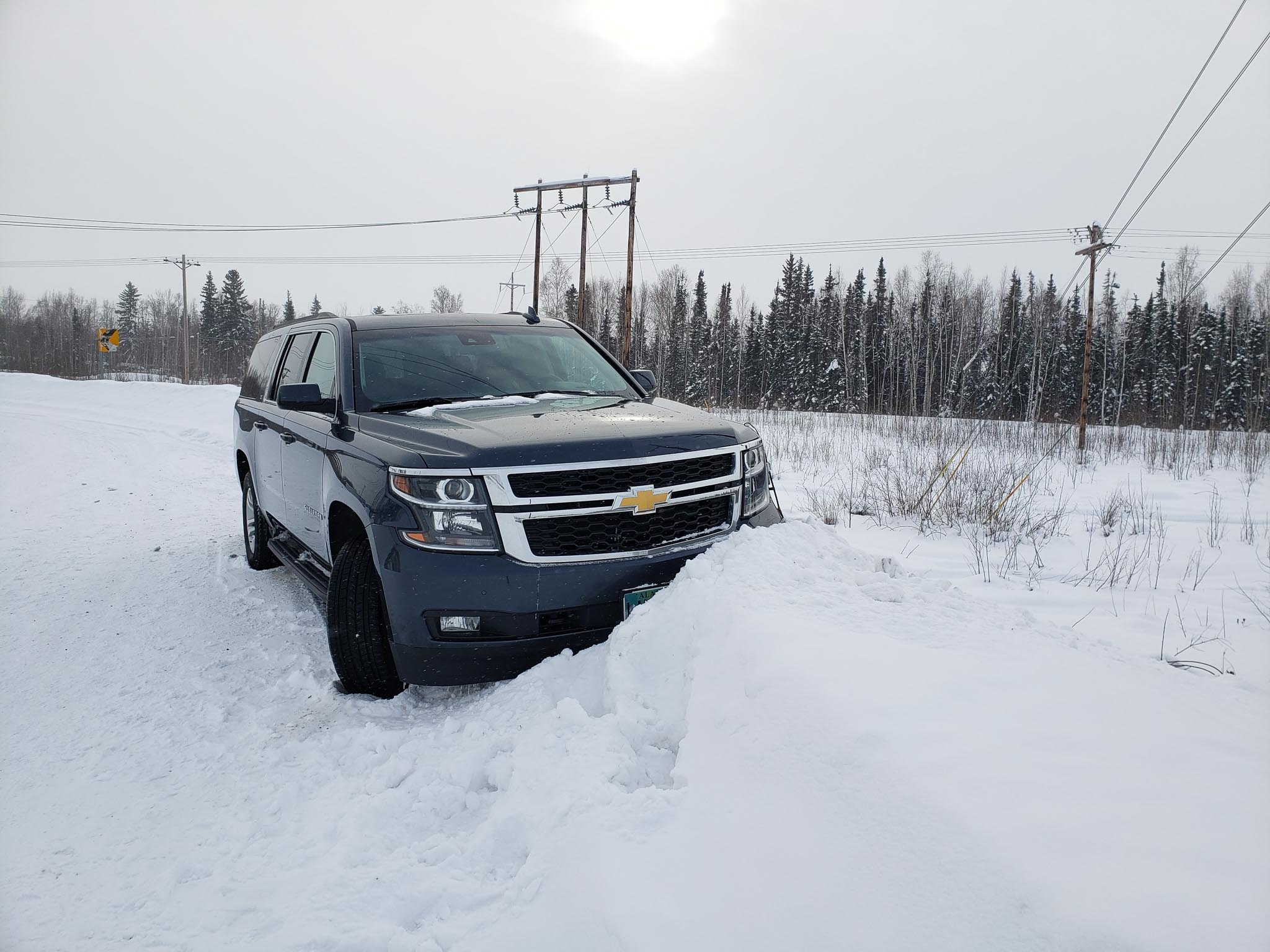
Despite my careful driving (no, really), on this final day I ended up drifting off a small road and the car got stuck in the snow piled on the side of the road. Yay, first roadside assistance request! 🤦
Finally that evening we headed to the airport disappointed at having not experienced the auroras properly. And as fate would have it, then in those final few minutes when we were near the airport, we spotted auroras in the sky. They were bright and noticeable to the naked eye despite us being in the city and having our eyes accustomed to loads of light pollution. We didn’t get a chance to soak it in or photograph it. But it seemed to serve one purpose well. The universe gave us a teeny glimpse of what we were there to see, guaranteeing that we will return one day!
